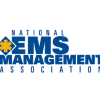Updated June 2015
A few years ago, Rick Hunt, M.D., when at the Centers for Disease Control, brought “A Tale of Our Cities” to New York, San Diego … and Boston. As I reported in this column then, the CDC was highly concerned that communities in the U.S. be prepared for the potential of a terrorist bombing. They brought in experts from the military and countries that had experience with emergency response to bombings, including Israel, Pakistan, Great Britain and Spain. For the Boston meeting, more than 700 people came, representing every possible stakeholder group in the area, from EMS to emergency management to hospitals and many more.
Now, unfortunately, we have experience of our own to share.
Nine days after the Boston bombings, James Hooley, chief of Boston EMS, participated in a webinar panel to share lessons learned. His haunting reminder: You have to have the mindset of when, not if.
By all accounts, Boston was not only well prepared but resilient. That is, the community responded with vigor and hope—Boston strong.
Atul Gawande is a surgeon at Brigham and Women’s Hospital in Boston and is associate director of their Center for Surgery and Public Health. He is also an associate professor at the Harvard School of Public Health and an associate professor of surgery at Harvard Medical School. And he is a journalist who makes regular contributions to the magazines Slate and The New Yorker. In an insightful article in the latter publication, he discussed the Boston bombings and how emergency response to terrorism has changed since 9/11. Here’s what he had to say:
“Talking to people about that day, I was struck by how ready and almost rehearsed they were for this event. A decade earlier, nothing approaching their level of collaboration and efficiency would have occurred. We have, as one colleague put it to me, replaced our pre-9/11 naïveté with post-9/11 sobriety. Where before we’d have been struck dumb with shock about such events, now we are almost calculating about them. When ball bearings and nails were found in the wounds of the victims, everyone understood the bombs had been packed with them as projectiles.
“At every hospital, clinicians considered the possibility of chemical or radiation contamination, a second wave of attacks, or a direct attack on a hospital. Even nonmedical friends e-mailed and texted me to warn people about secondary and tertiary explosive devices aimed at responders. Everyone’s imaginations have come to encompass these once unimaginable events.
“Hence the grim efficiency with which the city responded. Organizers halted the race. Runners who’d trained for weeks for the event turned away from the finish line in bewildered but stoic acceptance. … Risks of further attack required assessment. Panic had to be averted. Criminal evidence had to be secured. And above all, victims needed to be saved.
“What prepared us? Ten years of war have brought details of attacks like these to our towns through news, images, and the soldiers who saw and encountered them. Almost every hospital has a surgeon or nurse or medic with battlefield experience, sometimes several. … Disaster response has become an area of wide interest and study. Cities and towns have conducted disaster drills, including one in Boston I was involved in that played out the scenario of a dirty-bomb explosion at Logan Airport on an airliner from France.
“From 9/11 to Newtown, we’ve all watched with not only horror but also grave attention the myriad ways in which the sociopathy of killers has combined with the technology of inflicting mass casualty. … We’ve learned, and we’ve absorbed. This is not cause for either celebration or satisfaction. That we have come to this state of existence is a great sadness. But it is our great fortune.”


